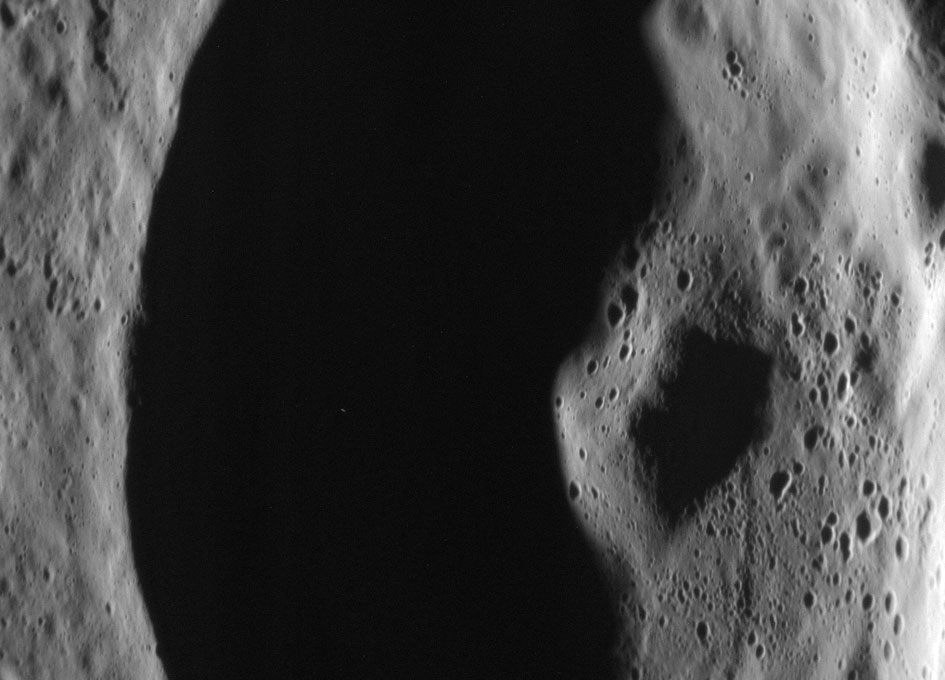MESSENGER Celebrates 1,000 Earth Days in Orbit around Mercury

The MESSENGER spacecraft has completed 1,000 Earth days of flight operations in orbit around Mercury.
“This milestone is a testament to the outstanding work of those who designed, tested, and operated this spacecraft,” says Jim McAdams of the Johns Hopkins University Applied Physics Laboratory (APL) and the lead engineer for MESSENGER’s mission design team.
“MESSENGER was designed to function for eight years following launch and to withstand the harsh environmental conditions of the inner solar system and solar heating up to 11 times greater than experienced by spacecraft near Earth,” McAdams says. “The probe not only has continued to function, it has thrived, with very little loss of planned observations for more than nine years and four months since launch.”
“To date, the spacecraft has returned 198,166 images from orbit about Mercury, far exceeding the mission’s original plans,” says APL’s Rob Gold, MESSENGER’s Science Payload Manager. “In the original mission concept we were planning to use half of the telemetry for images and the rest for the other instruments, and that plan would have returned about 1,000 images of the surface of Mercury. That we are now approaching 200,000 images is the result of major technological improvements made during construction of MESSENGER.”
“Some of the improvements were in the hardware,” he noted, “including the development of an electrically steered phased-array antenna. Others were in operational techniques, such as the use of the CCSDS (Consultative Committee for Space Data Systems) File Delivery Protocol,” a highly specialized protocol designed to overcome space operations communications challenges.
The orbital phase of the MESSENGER mission, which was originally designed to last one Earth year, is now nine months into a second extended mission that is scheduled to conclude early in 2015. The lowest point of MESSENGER’s orbit is now 325 kilometers (201 miles) above Mercury’s surface. This minimum altitude will continue to decrease until the first maneuver of the mission’s low-altitude campaign in mid-June 2014.
“MESSENGER has not merely survived life in a tough neighborhood, it has produced a string of major scientific discoveries that have transformed our understanding of the innermost planet and how the inner solar system was formed,” adds MESSENGER Principal Investigator Sean Solomon of Columbia University. “And we expect those discoveries to continue as MESSENGER begins to pass progressively closer to Mercury’s surface than ever before.”
MESSENGER (MErcury Surface, Space ENvironment, GEochemistry, and Ranging) is a NASA-sponsored scientific investigation of the planet Mercury and the first space mission designed to orbit the planet closest to the Sun. The MESSENGER spacecraft launched on August 3, 2004, and entered orbit about Mercury on March 17, 2011 (March 18, 2011 UTC), to begin a yearlong study of its target planet. MESSENGER’s first extended mission began on March 18, 2012, and ended one year later. MESSENGER is now in a second extended mission, which is scheduled to conclude in March 2015. Dr. Sean C. Solomon, the Director of Columbia University’s Lamont-Doherty Earth Observatory, leads the mission as Principal Investigator. The Johns Hopkins University Applied Physics Laboratory built and operates the MESSENGER spacecraft and manages this Discovery- class mission for NASA.








